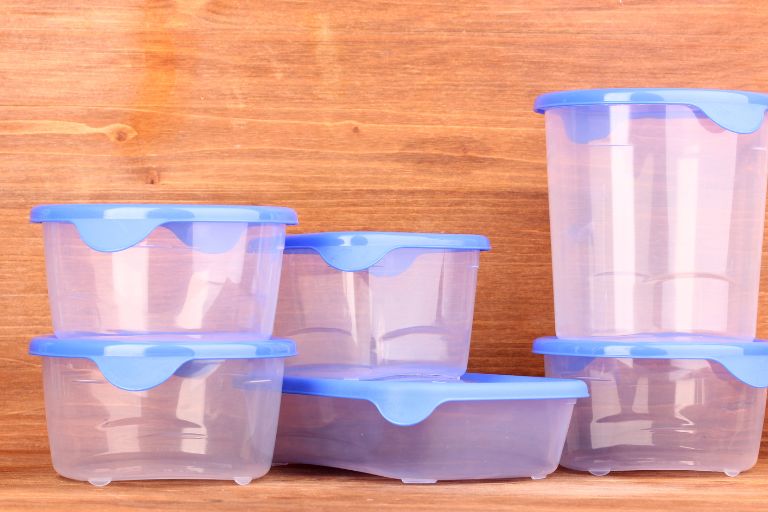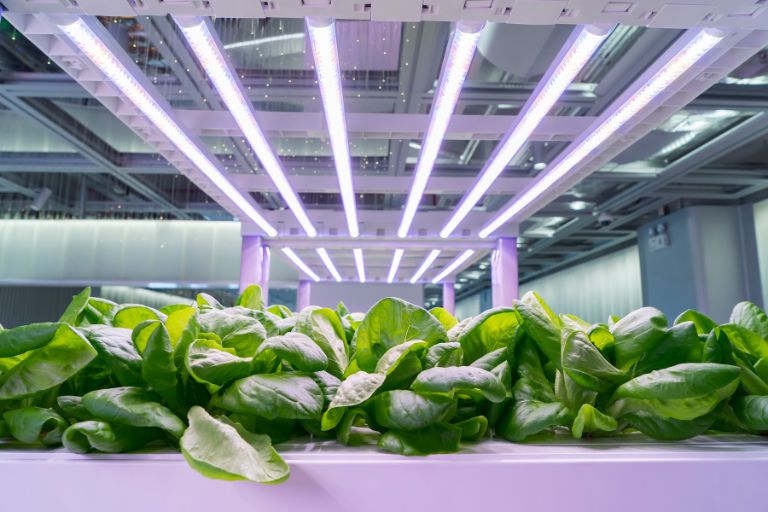Revolutionize Your Space: The Viral Blueprint for Planning and Designing Your Dream Garage Garden

Do you have an unused garage space that’s gathering dust and clutter? Turn it into a green and functional oasis with a garage garden! Planning and designing a garage garden requires careful consideration of the available space, lighting and ventilation, as well as selecting the right plants, containers and accessories to create a functional and visually appealing layout. A garage garden is an excellent solution for those who don’t have access to traditional outdoor gardens and offers numerous benefits, from improving air quality to reducing stress and promoting general wellbeing. In this article, we offer practical tips and creative ideas for planning and designing a garage garden that will maximise the use of space and enhance the overall aesthetic value of your property.
Assessing the Space
The first and most important step in planning and designing a garage garden is to assess the space available. Before you start, take accurate measurements of the space available, including the height of the ceiling, width and depth of the garage. This will help you determine how much space you have for containers, paths and other garden features.
Once you have an idea of the space available, identify any potential challenges that could affect your garage garden. For example, if the garage has limited natural light, you may need to consider using grow lights or choosing plants that don’t need a lot of sunlight. Poor ventilation can also be an issue, especially if the garage is attached to the house. If this is the case, consider adding a fan or opening the garage door to allow fresh air to circulate.
Also take note of any obstructions that could affect the layout of your garden, such as electrical outlets, water sources or storage areas. By taking the time to assess the space and identify potential challenges, you can plan and design a garage garden that maximises the use of the available space and minimises any potential problems.
To accurately measure your garage, follow these steps:
Measure the width and length of your garage – Use a tape measure to determine the width and length of the space where you want to create your garage garden. Record the measurements on paper, including any irregularly shaped areas.
Measure the height of your garage – Measure the height of the ceiling from the floor to the highest point. This measurement is essential as it will help you determine the type of plants you can grow in your garage garden.
Identify any obstacles – Look around the garage and identify any obstructions that may affect the layout of your garden. This could include electrical outlets, water sources, storage areas or other fixed objects. Make a note of these obstacles so that you can work around them when designing your garden.
Assess lighting and ventilation – Observe the amount of natural light entering the garage throughout the day. Note any areas where the light is poor, as this will affect the types of plants you can grow. Similarly, assess the ventilation and airflow in the garage, noting any areas that are particularly stuffy or stagnant.
Take accurate measurements and identifying potential obstacles so you can plan and design a garage garden that is both functional and aesthetically pleasing. The key details above will help you choose the right plants, containers and garden features, and create a layout that maximises the use of the available space.
Planning the Layout
Creating a functional and visually appealing garden layout is essential for a successful garage garden. Some common tips to help you maximise the space available are:
Choose the right containers – Containers are an excellent choice for a garage garden because they allow you to move plants around and create a flexible layout. Choose containers that suit the size and style of your garage and that provide adequate drainage for your plants.
Create paths – Paths can help guide visitors through your garage garden while creating a sense of organisation and structure. Use pavers, stepping stones or gravel to create paths that wind through your garden and connect different areas.
Incorporate vertical gardens – Vertical gardens are a great way to maximise space and add visual interest to your garage garden. Consider adding hanging baskets, wall planters or trellises to grow climbing plants.
Use shelving and storage units – If space is at a premium, consider adding shelving or storage units to make the most of the space available. These can be used to store gardening tools, pots and other items you need to keep your garage garden looking its best.
Add decorative features – Finally, don’t forget to add decorative features to your garage garden, such as statues, fountains or garden ornaments. These can help create a unique and visually appealing space that reflects your personal style and taste.
Follow these tips and you can create a functional and visually appealing garage garden that maximises the available space and enhances the overall aesthetic value of your property.
Choosing the Right Plants
Choosing the right plants is crucial to a successful garage garden. Some plants that are easy to grow and maintain indoors and offer a range of benefits include:
Snake Plant (Sansevieria) – Perfect for garages with low light levels, this hardy plant is known for its ability to purify the air by removing toxins such as benzene and formaldehyde.
Spider Plant (Chlorophytum comosum) – Spider plants are excellent air purifiers and are also easy to maintain. They produce ‘spiderettes’, or baby spider plants, which can be removed and repotted to create more plants.
English Ivy (Hedera helix) – English ivy is a versatile plant that can be trained to grow up walls, trellises or even around the edges of containers. It is a great air purifier and can help remove mould from the air.
Peace Lily (Spathiphyllum) – Peace lilies are easy to care for and produce beautiful white flowers. They are also excellent air purifiers, removing toxins such as benzene, formaldehyde and trichloroethylene.
Aloe Vera – As well as being easy to grow, aloe vera has a number of medicinal benefits, including soothing burns and treating minor cuts and wounds.
Herbs – Herbs such as basil, rosemary and thyme can be grown in containers and used in cooking. They also provide natural pest control as their strong scents can repel insects.
Choose the right plants for your garage garden so you can create a space that is not only visually appealing, but also offers a range of benefits such as air purification, natural pest control and even medicinal properties.

Enhancing the Aesthetic Value
Creating a cohesive and visually appealing design is an essential aspect of planning and designing a garage garden. Some creative ideas on how to use colour, texture and lighting to create a stunning and cohesive garden design include:
Use a colour scheme – Choose a colour scheme that complements the style and mood of your garage garden. For example, a monochromatic colour scheme can create a sense of harmony and calm, while a bold and vibrant colour scheme can add energy and excitement.
Incorporate textures – Use a variety of textures to add depth and interest to your garage garden. Combine smooth, shiny foliage with rough, textured foliage to create a visually appealing contrast.
Add lighting – Use outdoor lighting to highlight key features of your garage garden and create a warm and inviting atmosphere. Consider using string lights, lanterns or spotlights to highlight focal points such as water features, statues or plants.
Create a focal point – Use a large plant or garden feature as a focal point to attract attention and create a sense of balance and harmony in your garden. A focal point can be a large container, trellis or water feature.
Use repetition – Repeating patterns, colours and shapes can create a sense of unity and harmony in your garage garden. For example, repeating the same plant or colour in different areas of your garden can create a sense of coherence.
Create layers – Use different levels and heights to create a layered and visually interesting garden. Combine tall plants with low-growing foliage to create a sense of depth and dimension.
Use these creative ideas to enhance the colour scheme, textures and lighting of your garage garden and you can create a stunning and cohesive garden design that will enhance the overall aesthetic appeal of your property.
Maintenance And Care
A healthy and thriving garage garden requires proper care and maintenance. Some practical tips on watering, fertilising and pruning your plants, as well as dealing with common problems such as pests and diseases include:
Watering – Make sure your plants are getting the right amount of water. Over or under watering can lead to plant stress and disease. Check soil moisture levels regularly and water when the top inch of soil feels dry.
Fertilise – Use a well-balanced fertiliser to give your plants the nutrients they need to thrive. Follow the instructions on the fertilizer package and apply every few weeks during the growing season.
Prune – Prune your plants regularly to remove dead or damaged foliage, promote healthy growth and control plant size and shape. Use clean, sharp pruning shears to avoid damaging the plant.
Pests and diseases – Monitor your plants for signs of pests and disease, such as yellowing leaves, wilting or discolouration. Use natural remedies or organic pesticides to control pests and diseases, such as spraying neem oil, soap water, or using beneficial insects such as ladybugs or lacewings.
Sunlight – Make sure your plants get enough sunlight, but not too much. Too much sunlight can burn and damage leaves. Monitor your plants regularly and move them if they don’t get enough or too much light.
Soil – Use good quality potting soil that drains well and provides adequate nutrients for your plants. Replace the soil every year or two, depending on the size and growth rate of the plant.
Follow these practical tips on watering, fertilising, pruning and troubleshooting common problems and you can ensure your garage garden thrives and stays healthy all year round.
Safety And Security
Keeping your garage garden safe and secure is essential to protect your investment and maintain the health and well-being of your plants. Some tips on how to keep your garage garden safe and secure include:
Install proper lighting – Outdoor lighting can deter intruders and make it easier to monitor your garden at night. Consider installing motion-activated lights or solar-powered lights to improve visibility and security.
Secure your garden tools – Keep your garden tools and equipment locked away in a secure storage area. This will prevent them from being stolen or used as a weapon by intruders.
Install a fence – A fence can prevent unauthorised access to your garden and protect it from animals or wildlife that could damage your plants. Choose a fence that matches the style of your garden and provides maximum security.
Use natural barriers – Use natural barriers such as hedges, shrubs or trees to create a barrier around your garden. This will provide an extra layer of protection and enhance the overall aesthetic appeal of your garden.
Use security cameras – Install security cameras to monitor your garden and deter intruders. Place the cameras in strategic locations to cover all areas of your garden.
Use alarm systems – Install an alarm system to alert you to intruders or suspicious activity. Consider a smart alarm system that can send alerts to your mobile phone and allow you to monitor your garden remotely.
Follow these tips to keep your garage garden safe and secure and you can ensure that your investment is protected and your plants remain healthy and thriving.
Designing and creating a garage garden can be a rewarding and enjoyable experience. By following the tips and ideas discussed in this article, you can transform your garage space into a functional and aesthetically pleasing garden that adds beauty and value to your home. Remember to assess your space and identify any potential challenges before starting the design process. Choose the right containers, incorporate vertical gardens and create paths to maximise your available space. Choose plants that are easy to maintain and provide a range of benefits such as air purification and natural pest control. Use creative ideas to add colour, texture and lighting to create a cohesive and visually appealing design. It’s also important to maintain and care for your garage garden by watering, fertilising and pruning your plants regularly. Keep your garden safe and secure by installing proper lighting, using natural barriers and installing security cameras or alarm systems.
Implement these strategies and you can enjoy the beauty and benefits of a garage garden while increasing the value of your home and creating a peaceful and relaxing space for you and your loved ones to enjoy.






